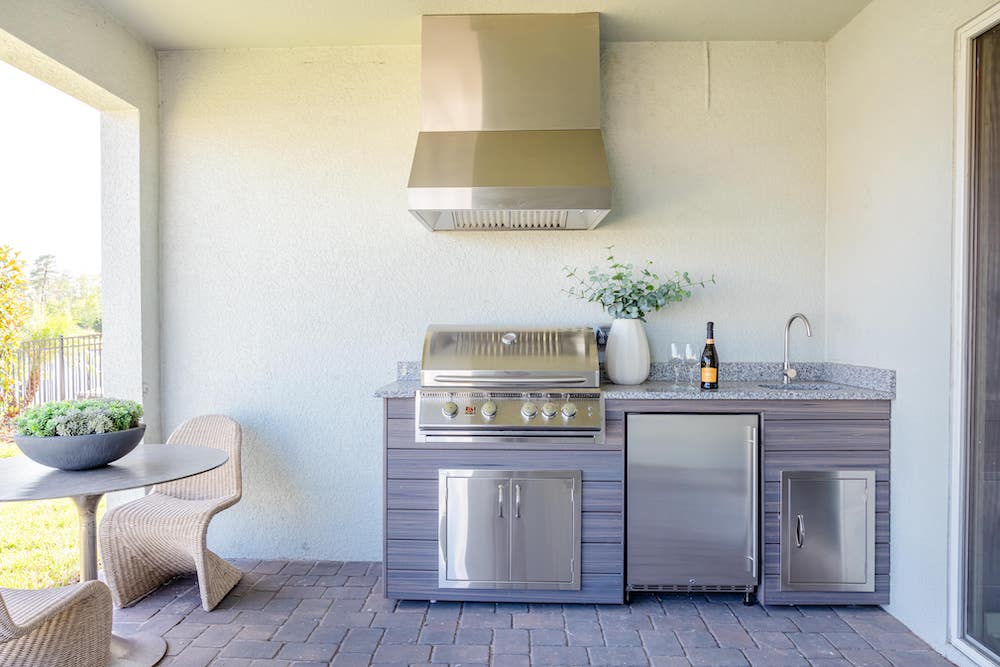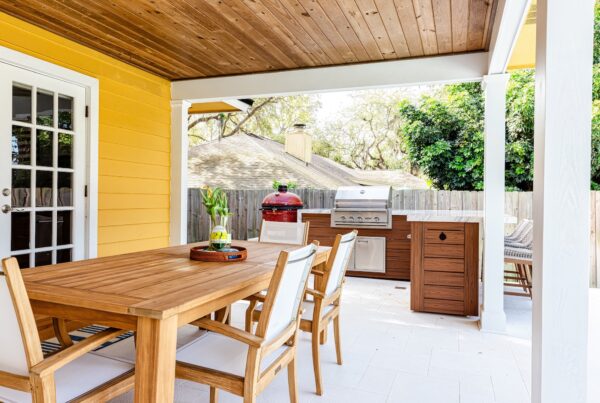
When it comes to building the perfect outdoor kitchen, there are several factors to consider, including the need for a vent hood. Vent hoods play a crucial role in maintaining air quality, reducing odors, and ensuring a safe cooking environment. There are several factors that determine whether you need a vent hood for your outdoor kitchen, including compliance with local municipal building and fire codes.
The Purpose and Benefit of a Vent Hood
A vent hood, also known as an exhaust hood or range hood, is a ventilation device installed above the cooking area in an outdoor kitchen. Its primary function is to extract smoke, grease, and odors, ensuring clean air and minimizing the risk of fire or respiratory issues. By effectively removing excess fumes, vent hoods contribute to a healthier cooking environment for both the cook and guests.
Factors to Consider When Deciding on a Vent Hood
First, consider your cooking habits and frequency. If you often use high-heat cooking methods or indulge in greasy dishes, a vent hood becomes essential. Additionally, the types of outdoor cooking appliances you use and their associated smoke and odor production should be taken into account. The location and layout of your outdoor kitchen, as well as the prevailing weather conditions, can also influence the need for a vent hood.
Local Municipal Construction and Fire Codes
Compliance with local construction and fire codes is an important consideration when planning to install an outdoor kitchen. Different municipalities may have specific requirements regarding outdoor kitchen ventilation. It is essential to research and understand these regulations to determine if a vent hood is mandatory in your area. Construction and fire codes are in place to ensure safety and protect against potential hazards, making it imperative to abide by them.
Assessing the Need for a Vent Hood
Is your kitchen under a ceiling, or in open air? If it is under a solid ceiling on your patio, you will likely need a vent hood. To determine the necessity of a vent hood, consult with a professional outdoor kitchen builder. They can provide valuable insights based on their expertise and knowledge of local regulations. Assess the specific building and fire codes applicable to your area and consider the size, placement, and complexity of your outdoor kitchen project.
Alternative Ventilation Options
While vent hoods are the most common and effective ventilation method for outdoor kitchens, there are alternative options worth exploring. Natural ventilation through open spaces and proper airflow can help dissipate smoke and odors. Canopy structures and overhead coverage can also redirect smoke away from the cooking area. However, it’s essential to understand the limitations and considerations associated with these alternatives, and ensure they comply with local regulations.
Making an Informed Decision
To make an informed decision, gather all the information about your specific situation. Consider the recommendations of outdoor kitchen experts and professionals who can provide tailored advice based on your needs and local regulations. By carefully weighing the costs and benefits of installing a vent hood, you can make the best choice for your outdoor kitchen.
The need (or lack of) for a vent hood will largely come down to the location of your kitchen and your local regulations. If your kitchen is standing by itself in open air, it is unlikely that you will require a vent hood. If your kitchen is against a wall under an overhang on your patio, a vent hood will likely be a necessity. Contact us today to discuss your unique situation, and we will be able to best advise.



